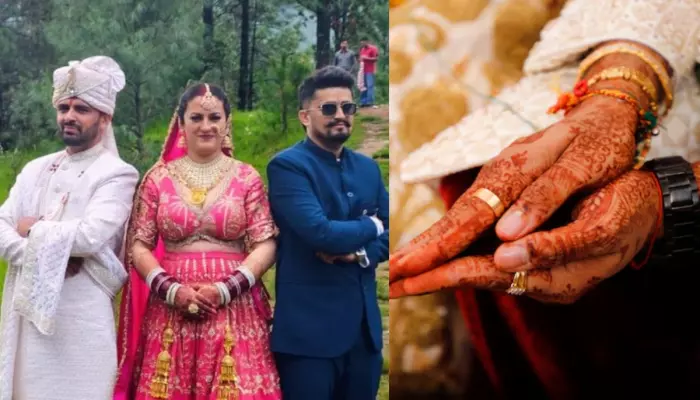In a remote Himachal Pradesh village, an age-old tradition resurfaced when two brothers married the same woman under a tribal ritual still observed by the Hatti community. The event, which took place in Shillai village, Sirmaur district, from July 12 to July 14, drew hundreds of guests and widespread attention both online and offline.
The bride, Sunita Chauhan, entered into matrimony with Pradeep and Kapil Negi through a culturally rich ceremony that included local folk music and dance. The practice, known locally as Jodidara or Jajda, is a form of polyandry where a woman marries more than one man—often brothers.
Sunita, originally from Kunhat village, said she was fully aware of the tradition and agreed to the marriage of her own free will. “I was aware of the tradition and made my decision without any pressure,” she said. Pradeep, who works for a government office, said, “We followed the tradition publicly as we are proud of it, and it was a joint decision.” His brother Kapil, employed overseas, added, “We’re ensuring support, stability and love for our wife as a united family. We’ve always believed in transparency.”
Why Polyandry Exists in the Hatti Tribe
Historically, this tradition has helped preserve land and promote family unity. Kundan Singh Shastri, the General Secretary of Kendriya Hatti Samiti, explained that Jodidara began centuries ago to prevent ancestral land from being split among multiple heirs. “This tradition was invented thousands of years ago to save a family’s agricultural land from further division,” he told PTI.
He also said that such marriages strengthened bonds among brothers and made large families more stable and self-sufficient in tribal life. “If you have a bigger family, more men, you are more secure in a tribal society,” he added, highlighting the importance of joint efforts in remote and rugged terrain.
Cultural and Legal Status
The Hatti community, which spans across 450 villages in the Trans-Giri region and includes nearly 300,000 people, was officially classified as a Scheduled Tribe three years ago. Polyandrous unions like this one are legally acknowledged under Himachal Pradesh’s revenue laws. Lawyer and legal advisor to the Central Hatti Committee, Ransingh Chauhan, confirmed this: “Hundreds of marriages happen through polyandry and other age-old traditions… the practice is being done to ensure that families stay united and lands are not divided among themselves.”
Despite its continued presence in villages like Badhana and Kinnaur in Himachal and Jaunsar Babar in Uttarakhand, such marriages are becoming rare. Rising education levels and changing societal norms are causing many to abandon or hide the practice. In some cases, these marriages are performed discreetly but still respected within the local community.
Rituals of the Ceremony
The traditional wedding ceremony includes a procession that brings the bride to the groom’s home, where a ritual called Seenj is performed. During the ritual, a local priest recites mantras, sprinkles holy water, and blesses the couple with jaggery and prayers for a sweet life, invoking the family’s Kul Devta (ancestral deity).
Online Reactions
Videos of the wedding have gone viral on social media, with some users referencing the Mahabharata and drawing comparisons to Draupadi and the Pandavas. While some commenters were supportive of the tradition, others questioned its relevance today.


